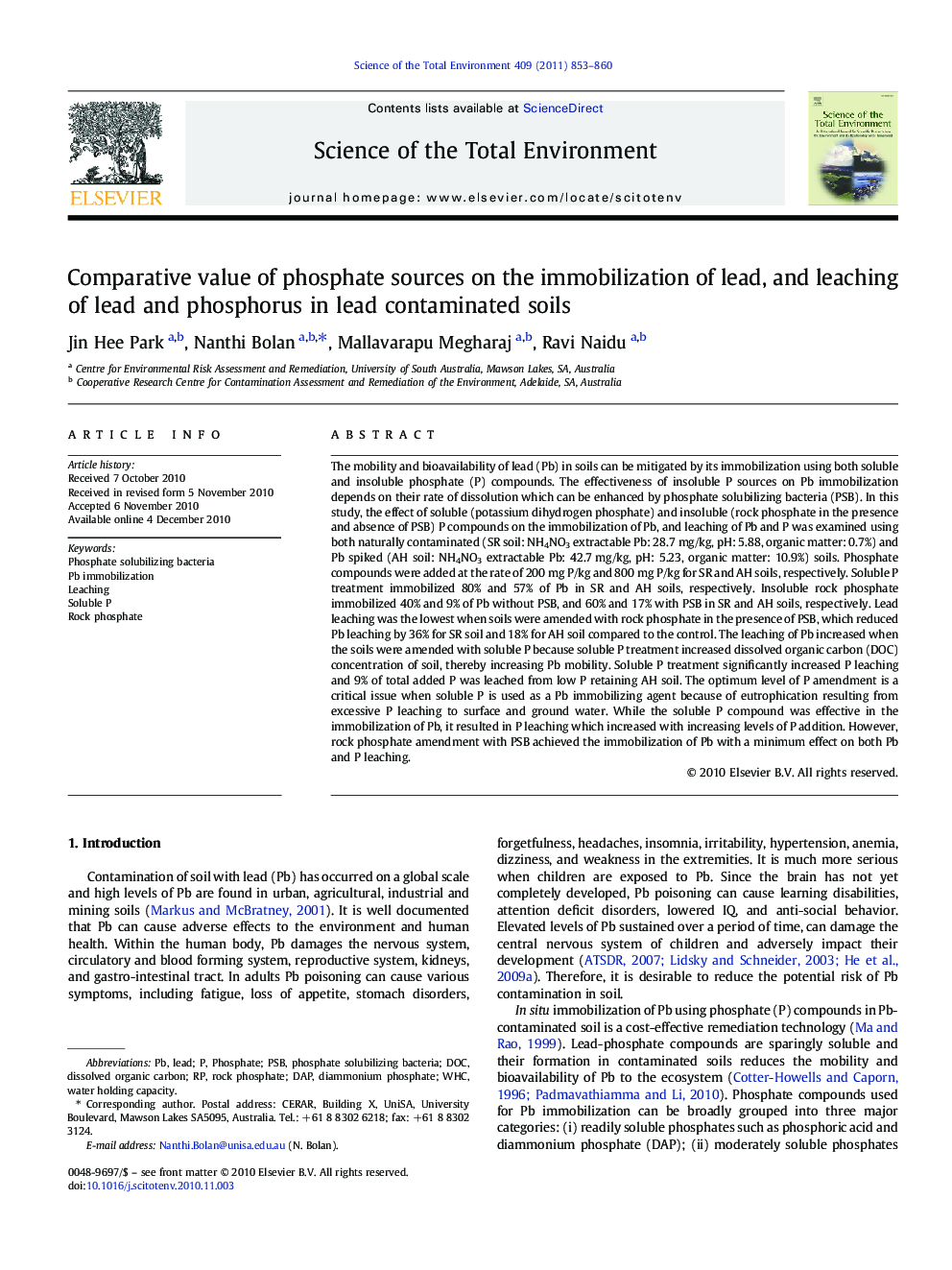| کد مقاله | کد نشریه | سال انتشار | مقاله انگلیسی | نسخه تمام متن |
|---|---|---|---|---|
| 4430624 | 1619858 | 2011 | 8 صفحه PDF | دانلود رایگان |

The mobility and bioavailability of lead (Pb) in soils can be mitigated by its immobilization using both soluble and insoluble phosphate (P) compounds. The effectiveness of insoluble P sources on Pb immobilization depends on their rate of dissolution which can be enhanced by phosphate solubilizing bacteria (PSB). In this study, the effect of soluble (potassium dihydrogen phosphate) and insoluble (rock phosphate in the presence and absence of PSB) P compounds on the immobilization of Pb, and leaching of Pb and P was examined using both naturally contaminated (SR soil: NH4NO3 extractable Pb: 28.7 mg/kg, pH: 5.88, organic matter: 0.7%) and Pb spiked (AH soil: NH4NO3 extractable Pb: 42.7 mg/kg, pH: 5.23, organic matter: 10.9%) soils. Phosphate compounds were added at the rate of 200 mg P/kg and 800 mg P/kg for SR and AH soils, respectively. Soluble P treatment immobilized 80% and 57% of Pb in SR and AH soils, respectively. Insoluble rock phosphate immobilized 40% and 9% of Pb without PSB, and 60% and 17% with PSB in SR and AH soils, respectively. Lead leaching was the lowest when soils were amended with rock phosphate in the presence of PSB, which reduced Pb leaching by 36% for SR soil and 18% for AH soil compared to the control. The leaching of Pb increased when the soils were amended with soluble P because soluble P treatment increased dissolved organic carbon (DOC) concentration of soil, thereby increasing Pb mobility. Soluble P treatment significantly increased P leaching and 9% of total added P was leached from low P retaining AH soil. The optimum level of P amendment is a critical issue when soluble P is used as a Pb immobilizing agent because of eutrophication resulting from excessive P leaching to surface and ground water. While the soluble P compound was effective in the immobilization of Pb, it resulted in P leaching which increased with increasing levels of P addition. However, rock phosphate amendment with PSB achieved the immobilization of Pb with a minimum effect on both Pb and P leaching.
Research Highlights
► Novel phosphate solubilizing bacteria enhanced P solubilization from rock phosphate and achieved Pb immobilization without any detrimental effect to the environment.
► Although soluble P compound was effective in the immobilization of Pb, it resulted in increased P and Pb leaching due to the formation of mobile dissolved organic carbon and Pb complex.
► Application of phosphate solubilizing bacteria with locally available low-cost insoluble phosphate compounds can be used as a sustainable remediation technology for in situ stabilization of Pb in contaminated sites including mine sites and urban soils.
Journal: Science of The Total Environment - Volume 409, Issue 4, 15 January 2011, Pages 853–860